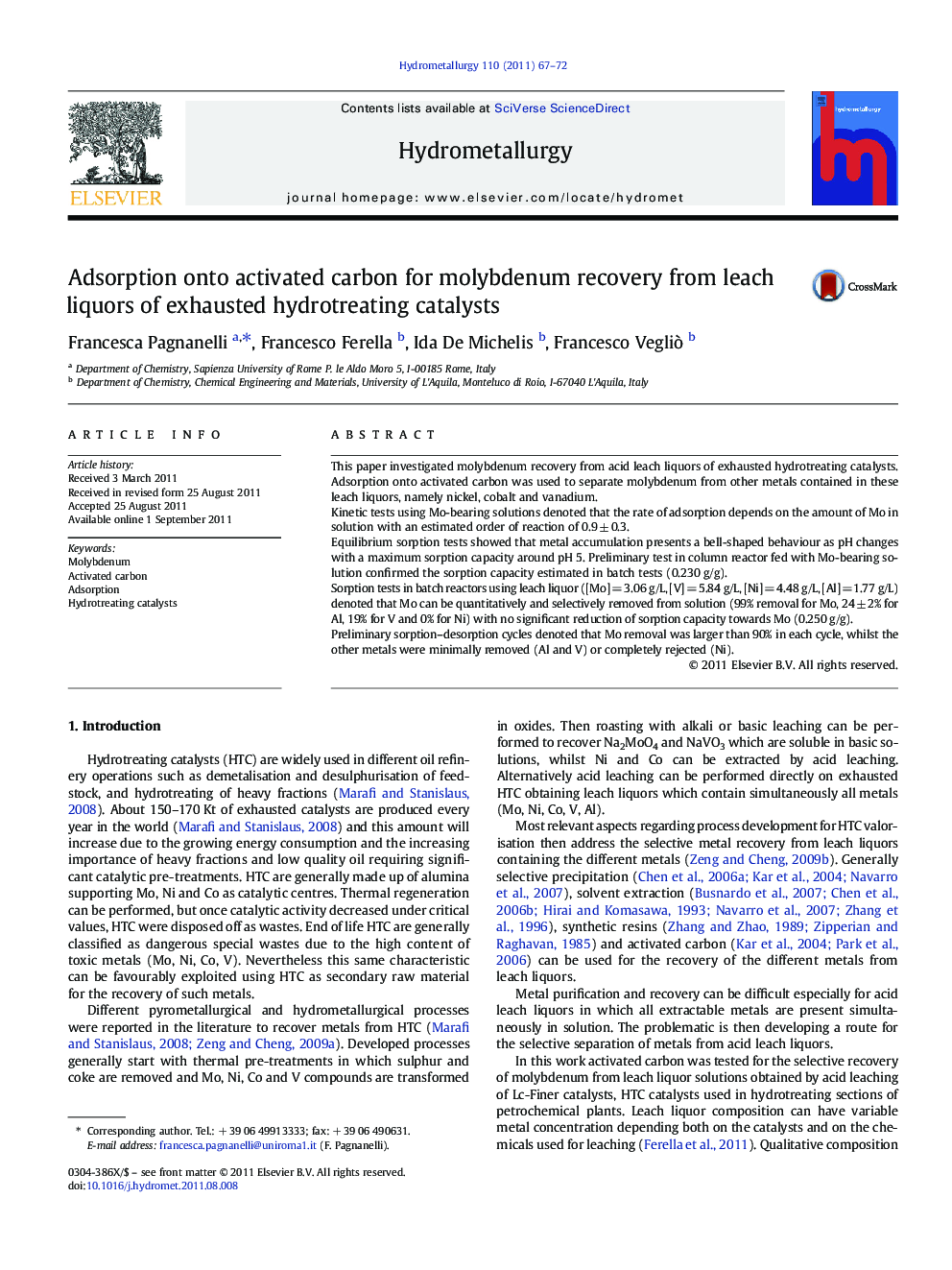| Article ID | Journal | Published Year | Pages | File Type |
|---|---|---|---|---|
| 212622 | Hydrometallurgy | 2011 | 6 Pages |
This paper investigated molybdenum recovery from acid leach liquors of exhausted hydrotreating catalysts. Adsorption onto activated carbon was used to separate molybdenum from other metals contained in these leach liquors, namely nickel, cobalt and vanadium.Kinetic tests using Mo-bearing solutions denoted that the rate of adsorption depends on the amount of Mo in solution with an estimated order of reaction of 0.9 ± 0.3.Equilibrium sorption tests showed that metal accumulation presents a bell-shaped behaviour as pH changes with a maximum sorption capacity around pH 5. Preliminary test in column reactor fed with Mo-bearing solution confirmed the sorption capacity estimated in batch tests (0.230 g/g).Sorption tests in batch reactors using leach liquor ([Mo] = 3.06 g/L, [V] = 5.84 g/L, [Ni] = 4.48 g/L, [Al] = 1.77 g/L) denoted that Mo can be quantitatively and selectively removed from solution (99% removal for Mo, 24 ± 2% for Al, 19% for V and 0% for Ni) with no significant reduction of sorption capacity towards Mo (0.250 g/g).Preliminary sorption–desorption cycles denoted that Mo removal was larger than 90% in each cycle, whilst the other metals were minimally removed (Al and V) or completely rejected (Ni).
► Activated carbon as sorbent for molybdenum recovery. ► Selective recovery from acid leaching of exhausted catalysts. ► Separation of molybdenum from vanadium, aluminium and nickel. ► Kinetic and equilibrium modelling of sorption process.
